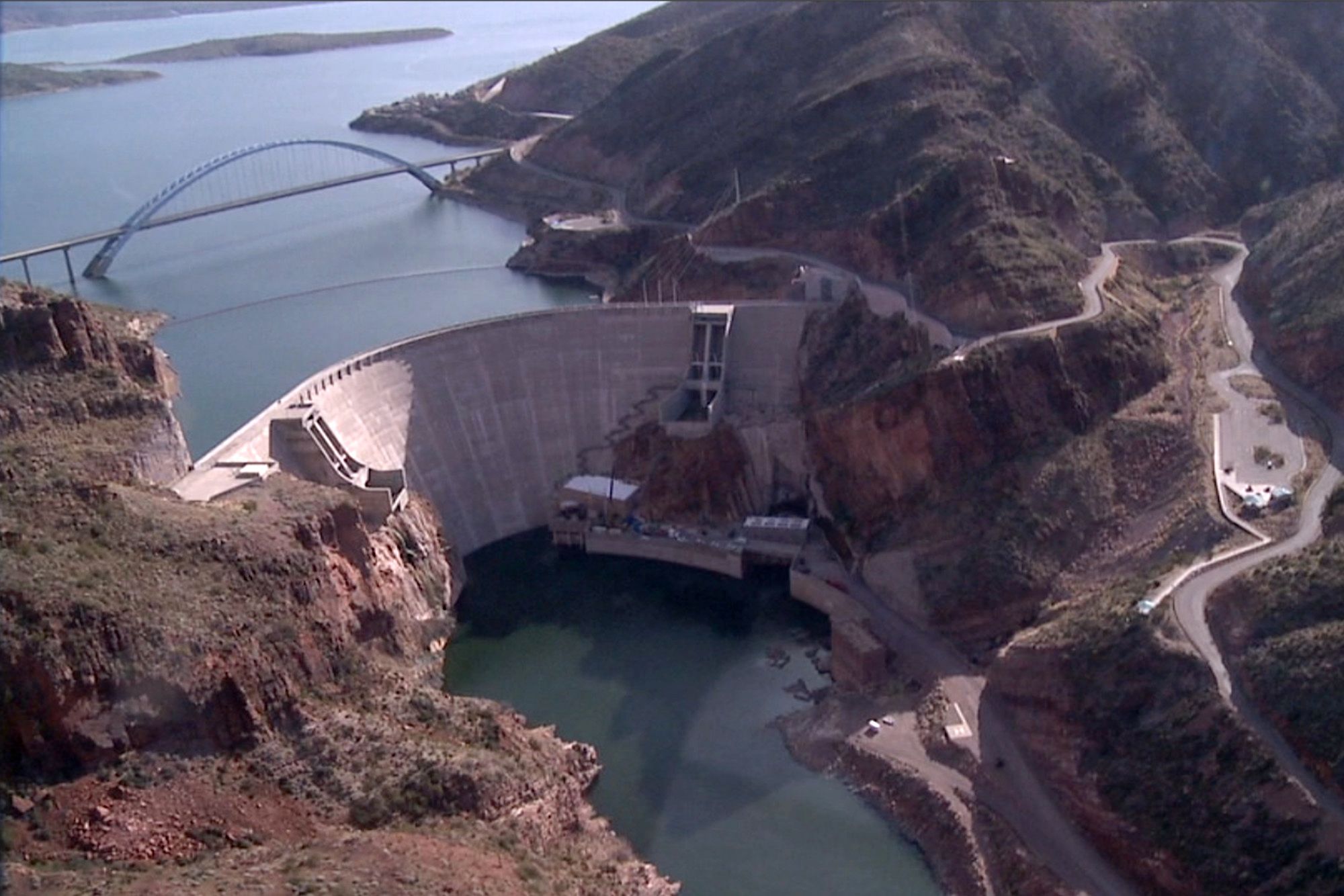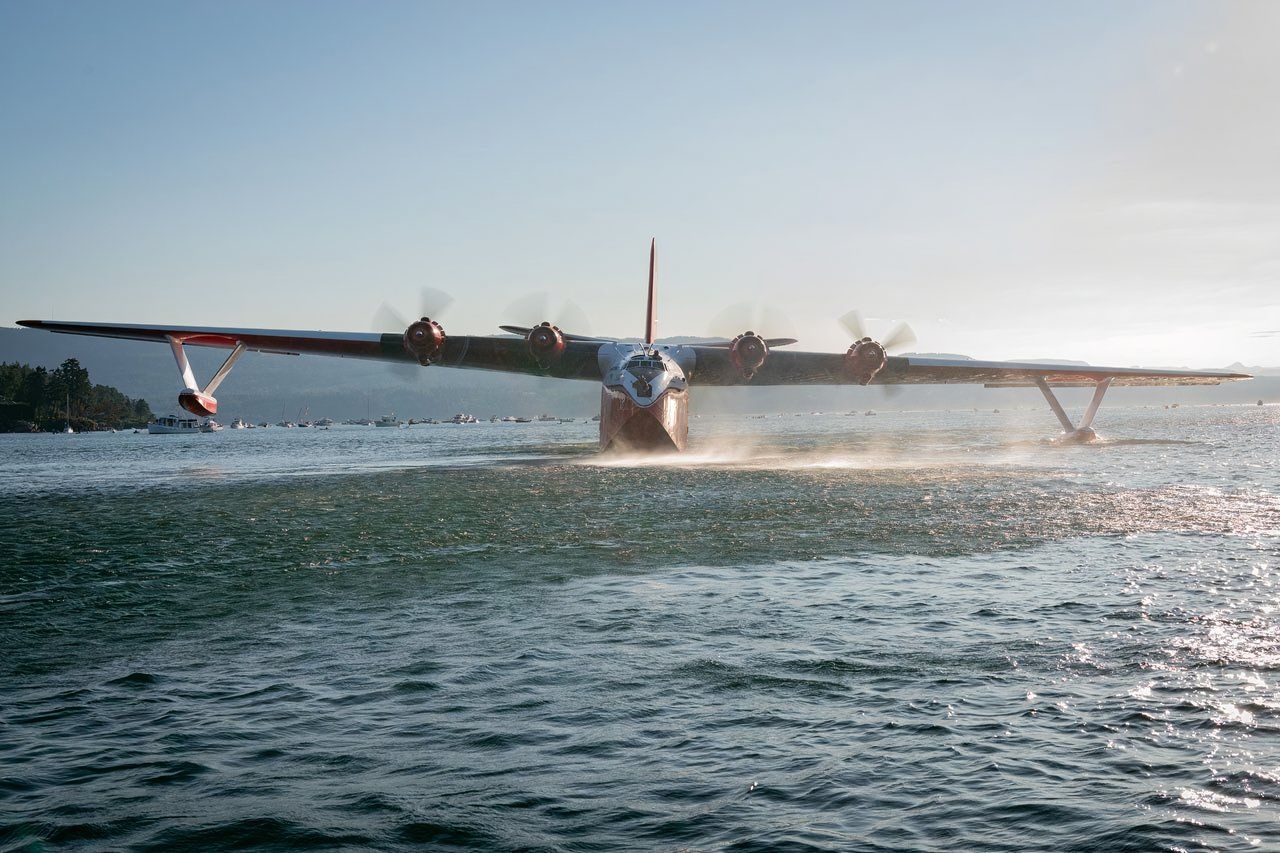Summary
- The Philippine Mars needs a lake to land due to lacking landing gear.
- Roosevelt Lake in Arizona will accommodate the Philippine Mars for disassembly and transport.
- The Philippine Mars will join the Pima Air & Space Museum to rest alongside other large aircraft.
The world’s last Martin JRM Mars flying waterbomber in the Philippine Mars is heading for Arizona’s Pima Air & Space Museum. But why is the world’s last Mars flying waterbomber in the livery of the US Navy going to be retired in the Arizona desert when she needs a
Water landing
?
Philippine Mars needs a lake for her final landing
The Philippine Mars has no landing gear, so she will need a lake to land. However, Tucson, Arizona’s Pima Air & Space Museum, lacks a nearby lake and is mainly used to showcase land-based aircraft next to Davis-Monthan Air Force Base, which also stores many United States’ retired military aircraft.
That’s where Roosevelt Lake comes in, a 22.4-mile long and 188-foot-deep lake created by the Theodore Roosevelt Dam pictured above damming the Salt River. The lake is large enough to accommodate the Philippine Mars. It has a marina to accommodate disassembly for trucking the Mars the 148 or so miles to the Pima Air & Space Museum – mostly along Arizona State Highway 77.
Will be at a forever home alongside other large aircraft
The Pima Air & Space Museum currently houses many aircraft and some notable large aircraft, such as:
- The Aero Spacelines 377G “Super Guppy,”
- Two Boeing 747s
- A Boeing 777,
- The second prototype of the Boeing 787-8 Dreamliner.
- Lockheed C-141B Starlifter.
The museum currently holds 351 aircraft in its collection, including warbirds like the Boeing B-17, an Ilyushin IL-2, and two early-model Lockheed C-130s for starters. Now a Martin JRM Mars will be there also as per below.
One cannot go inside most if not all of these aircraft but the museum does other things to preserve history. For instance, the museum collaborates with The Damcasters Podcast in preserving aviation history. One can watch an episode with the museum’s director of collections below:
To help preserve aviation history, the Pima Air & Space Museum also has a 390th Bomb Group Memorial Museum. The museum not only honors the last Boeing B-17 Flying Fortress in US military service but also the experiences, sacrifices, and service of the 390th Bomb Group, from their prisoner of war (POW) experience to Operation Chowhound, an effort to feed starving Dutch citizens as World War II was concluding.
Additionally, the Pima Air & Space Museum operates the Titan Missile Museum. The Titan Missile Museum—a set for the Star Trek movie Star Trek: First Contact—is also a Titan Missile National Historic Landmark and former Titan II launch complex 571-7 that housed an intercontinental ballistic missile. There is also an Arizona Aviation Hall of Fame to honor Arizona aviators like the late Senator John S. McCain III, Frank Borman, and Barry Goldwater.
Photo: Tucson Military Vehicle Museum
Finally, Pima Air & Space Museum sponsors French aerobatic pilot Mélanie Astles and is starting the Tucson Military Vehicle Museum to focus on military ground vehicles. When it opens, the Museum will have tanks, armored personnel carriers, support trucks, and even air defense units on hand.
But wasn’t there another flying Mars waterbomber also?
Quite so in the Hawaii Mars waterbomber. On August 11, the Hawaii Mars had a final flight to the British Columbia Aviation Museum in Sidney, British Columbia.
Photo: Derek Heyes | British Columbia Aviation Museum
Based at Victoria International Airport and next to the Patricia Bay Seaplane Base, the Hawaii Mars has already been safely trucked to shore and is being made museum-ready for public viewing at her forever home. The last statement from the Museum has a target date of September 28. But there’s one last Martin JRM Mars to send off…
Ultimately, the two Mars waterbombers will be preserved to tell the story of the Martin JRM Mars in the Hawaii Mars, British Columbia’s favorite waterbomber. Also, in the case of the Philippine Mars, a flying boat transport.
As Wayne Coulson, CEO of Coulson Group, shared in an April 25 statement,
“As a fitting tribute to their years of service and years of hard work by many people in BC and the U.S., we are pleased to see both Mars aircraft landing to rest at world class institutions in 2024.”




